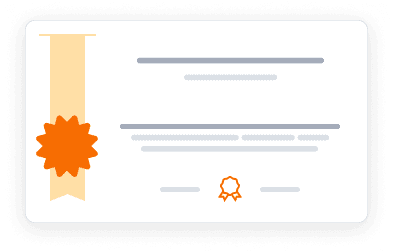This course is part of Electrónica básica.
This comprehensive course covers the essential theory of alternating current (AC) electrical circuits, providing a solid foundation for designing electrical installations and power systems. Students will develop a clear understanding of how AC circuits function through the phasor model approach. The curriculum progresses from basic concepts to practical applications, covering signal theory, complex number arithmetic, phasor modeling, fundamental circuit laws, analysis methods, and AC power concepts. The course emphasizes practical understanding that enables students to analyze more complex circuits with components like transformers, operational amplifiers, and transducers. By mastering these concepts, learners will gain valuable skills applicable to industrial installations, power factor correction, and electrical system design.
Instructors:
Spanish
Español
What you'll learn
Understand signals and waveforms in AC circuits and their key parameters
Master complex arithmetic for electrical circuit analysis
Apply phasor models to analyze passive and active circuit elements
Calculate impedance and use Ohm's and Kirchhoff's laws in AC circuits
Analyze series and parallel sinusoidal circuits in steady state
Compute real, reactive, and apparent power in AC systems
Skills you'll gain
This course includes:
PreRecorded video
Graded assignments, exams
Access on Mobile, Tablet, Desktop
Limited Access access
Shareable certificate
Closed caption
Get a Completion Certificate
Share your certificate with prospective employers and your professional network on LinkedIn.
Created by
Provided by

Top companies offer this course to their employees
Top companies provide this course to enhance their employees' skills, ensuring they excel in handling complex projects and drive organizational success.





There are 5 modules in this course
This course covers fundamental theory and practical applications of AC electrical circuits, focusing on developing a solid understanding through the phasor model approach. The curriculum begins with signals and waveforms, introducing sinusoidal parameters, average and RMS values, capacitors, and inductors. Students then learn complex arithmetic for phasor modeling of passive and active elements, impedance concepts, and Ohm's and Kirchhoff's laws. The course progresses to analyzing steady-state sinusoidal circuits in series and parallel configurations, including two-phase installations. Power concepts in AC systems are thoroughly covered, including complex power models, real, reactive, and apparent power, power factor, and circuit power calculations. The final section addresses power factor correction for inductive loads and industrial installations.
DC vs AC: Señales y formas de Onda
Module 1
El Modelo de Fasores
Module 2
Circuitos Sinusoidales en Estado Estable
Module 3
Potencia en AC
Module 4
Corrección del Factor de Potencia
Module 5
Fee Structure
Individual course purchase is not available - to enroll in this course with a certificate, you need to purchase the complete Professional Certificate Course. For enrollment and detailed fee structure, visit the following: Electrónica básica
Payment options
Financial Aid
Instructors

8 Courses
Director del Área de Electrónica at Galileo University
Eduardo Corpeño, Academic Director at Galileo University, is a leading educator in embedded systems and creator of the Brainfuino platform, with 30+ online courses.

7 Courses
Decano de la Facultad de Ingeniería de Sistemas, Informática y Ciencias de la Computación at Galileo University
Rodrigo Baessa, Dean at Galileo University, holds a Master's in Computer Engineering and teaches circuits, microprocessors, and robotics courses.
Testimonials
Testimonials and success stories are a testament to the quality of this program and its impact on your career and learning journey. Be the first to help others make an informed decision by sharing your review of the course.
Frequently asked questions
Below are some of the most commonly asked questions about this course. We aim to provide clear and concise answers to help you better understand the course content, structure, and any other relevant information. If you have any additional questions or if your question is not listed here, please don't hesitate to reach out to our support team for further assistance.



